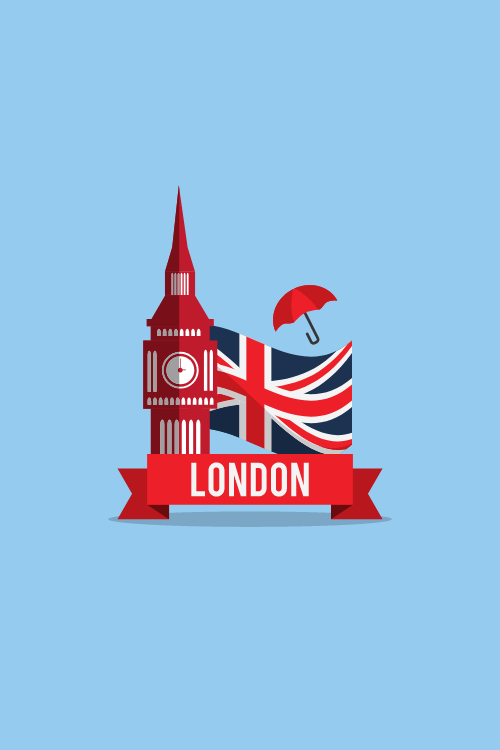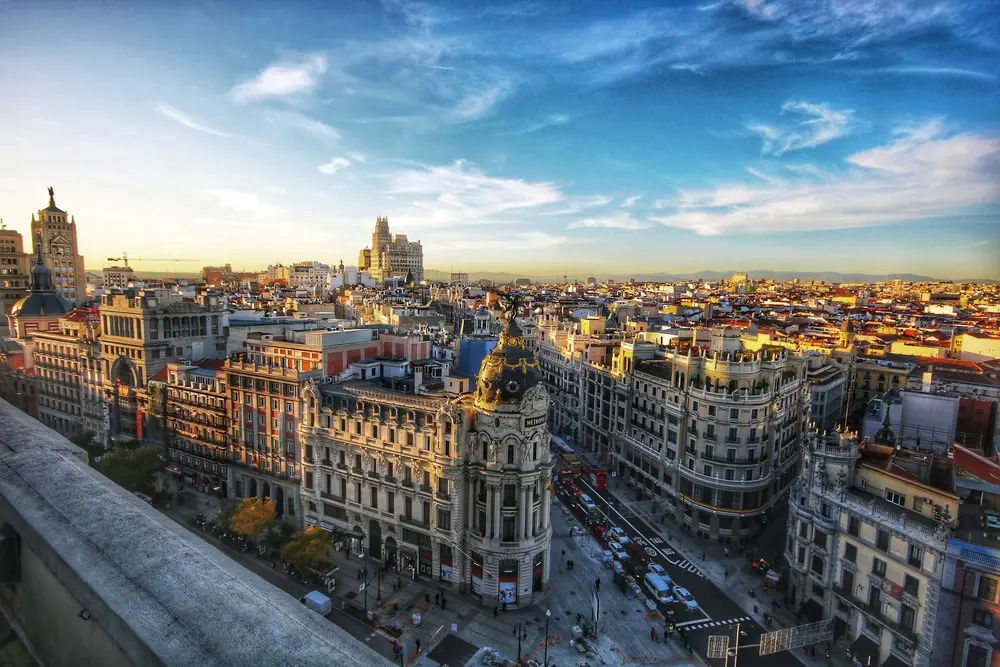Travel
Planning a Trip to Spain
Ready to plan your trip to Spain? You’re in for an amazing experience! Spain is rich in history, culture, and beautiful scenery. It has everything from lively cities to calm beaches, offering memories to last a lifetime.
Crafting your Spain itinerary may look tough, but this guide makes planning easy.
Why Spain Should Be Your Next Travel Destination
Spain is a place of experiences that will captivate your senses. From sunny beaches to snowy peaks, this diverse country has it all. Your perfect Spain itinerary awaits, packed with unforgettable moments and breathtaking sights.
History buffs, get ready. Spain is full of ancient Roman ruins, Moorish palaces, and Gothic cathedrals. These amazing structures tell stories of old times. They invite you to explore the country’s rich history and culture, filled with vibrant festivals and traditions that will leave you spellbound.
For food lovers, Spain is a gastronomic adventure. Enjoy delicious tapas, try paella, and drink world-class wines. Each region has special dishes, making Spain perfect for a foodie journey.
The heart of Spain truly lies in its people. Locals are warm and welcoming, making you feel at home. They share a laid-back lifestyle and a zest for life that’s truly contagious, a common vibe you’ll feel during any Spain trip. Exploring Spain, whether it’s cities like Cordoba or villages in northern Spain, means you’ll make lasting memories.
Spain is a perfect mix of history, culture, cuisine, and beautiful landscapes. It stands out as a top destination for your next adventure. Get ready to fall in love with Spain and see why it should be at the top of your travel list.
Staying Connected While Travelling (And Avoiding Global Roaming Data Costs)

While you have video calling, SIM cards, international phone cards, etc. eSIM cards are the easiest way to get instant data wherever you travel to in Spain.
What is an eSIM?
An eSIM, or embedded SIM, is a digital SIM card that is built directly into your device. Unlike traditional physical SIM cards, an eSIM can be activated and configured remotely, without the need to visit a store or swap out physical cards.
Why Choose an eSIM for Your Trip To Spain?
- Convenience: With an eSIM, you can activate your data plan before even arriving in Spain. No need to waste precious vacation time searching for a store or navigating language barriers. Simply purchase your eSIM online, activate it, and you’re ready to go as soon as you land.
- Cost-effective: eSIM plans often offer more competitive rates compared to traditional roaming charges or buying a local SIM card. You can choose a plan that fits your needs and budget, whether you need just a few gigabytes for basic browsing or a larger data allowance for streaming and heavy usage.
- Dual SIM Capability: Many newer smartphones support dual SIM functionality, allowing you to keep your home SIM active for calls and texts while using an eSIM for data. This means you can stay reachable on your usual number while avoiding expensive roaming fees.
- Easy to Manage: With an eSIM, you can manage your plan through an app on your phone. You can easily top up data, switch plans, or cancel your service as needed, all with just a few taps.
Check out our eSIM’s for Spain.
Best Time to Visit Spain
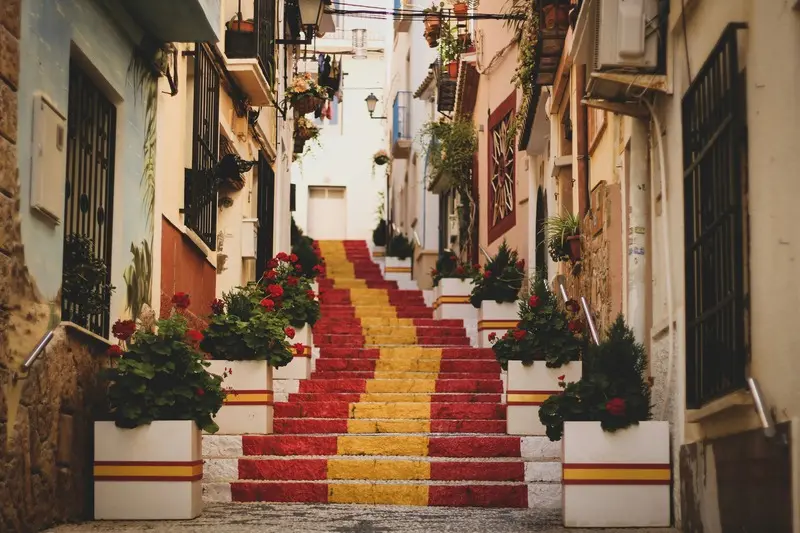
Choosing when to go to Spain depends on what you like and how long you’ll stay. The weather in Spain changes, shaping your visit. We’ll look at each season to find the best time for your adventure.
Seasonal Weather Patterns
In Spain, the weather shifts as the seasons change. Spring is mild, perfect for city explorations. Summer gets hot, especially in the southern Spain. Autumn is cool and pleasant, but winter can be cold in some places. Keep this in mind when picking your travel dates.
Peak Tourist Seasons
Spain is most crowded in summer, drawing many to its famous spots. If you like less busy times, visit in spring or autumn. These seasons have good weather and are quieter, perfect for most people.
Ideal Months for Different Activities
The best time for your Spanish vacation depends on what you love to do. City tours and cultural events are great in spring. Summer is for the beach and festivals. Fall is perfect for wine and hiking, while winter brings skiing in the mountains. Pick your visit length based on these activities.
Essential Travel Documents and Entry Requirements
When you’re planning a trip to Spain, understanding the travel rules is key. Make sure your passport is valid for three months after you plan to leave. Depending on where you’re from, you might need a Schengen visa.
In Spain, they use the Euro for money. It’s good to have cash for smaller buys even though credit cards work in most places. You’ll find ATMs in many spots around the cities and towns, making access to cash easy.
Remember, Spain uses type C and F plugs with a 230V power system. Bring a universal adapter so you can keep all your devices charged up. The main language is Spanish but English is used a lot in places where tourists visit.
Spain is a safe place, but it’s wise to be careful in busy tourist spots. Always keep an eye on your stuff and watch the people around you. By taking these simple steps, you can enjoy your Spanish journey without any worries.
Where to Begin
If you’re a structured type of person then this is a critical part of the planning process, typically you’ll want to choose a location that makes it easier to travel to other areas with the least amount of effort.
Choosing Your Starting Point
Start in Madrid or Barcelona to kick things off. These cities are easy to reach from around the world. They’re perfect for starting your journey through Spain. You’ll enjoy bustling city life and see famous sites from the moment you arrive.
Mapping Out Your Route
When planning your trip, choose a route that fits your time and what you love. Consider how you’ll travel between spots. Spain’s trains are fast and offer an easy way to get around. Or, you could rent a car for more flexibility and explore off the beaten path.
Don’t miss blending big city fun with small town charm. This makes your trip balanced and memorable.
Deciding on Trip Duration
Wondering how long to stay? Aim for 12-15 days to really experience Spain’s variety. For shorter stays, focus on one or two places. This helps you avoid feeling rushed.
Remember to check for any seasonal events. Festivals and special celebrations can make your trip even more fun.
Top Cities and Regions to Explore in Spain
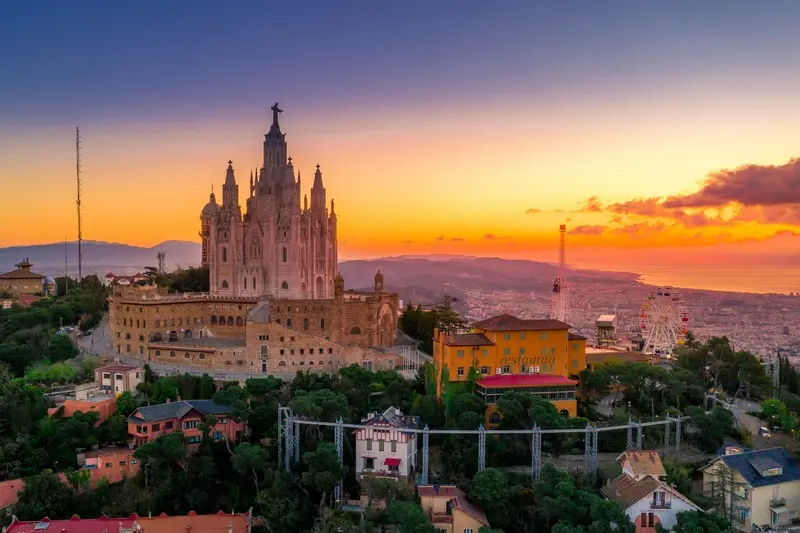
Spain is full of amazing places to visit. There are lively cities and serene places to see. We will look at some top locations in this stunning country.
Madrid is the heart of Spain, with top museums and a buzzing nightlife. Barcelona shines with unique Gaudí buildings and nice beaches. In the south, Seville reveals its deep culture through grand architecture.
Granada’s Alhambra is a key place showing Spain’s past with the Moors. Valencia mixes new and old beautifully. The Basque Country is heaven for anyone who loves food.
Santiago de Compostela ends the famous Camino de Santiago walk. It is rich in spiritual and cultural events. For history lovers, Toledo and Córdoba are great day trips.
In Andalusia, flamenco and Moorish culture add a special touch. No matter where you go in Spain, you’ll love the diversity. Make sure your trip includes city fun and time in nature.
Transportation Options Within Spain
Spain has plenty of ways to move around its beautiful places. You can travel from lively cities to scenic rural areas easily. Some options fit well with how you want to travel.
High-Speed Train Network
The high-speed train network is great for travelling quickly between big cities. It takes a little over 2.5 hours from Madrid to Barcelona by train. This is perfect for those who want to see a lot in a short time. The seats are comfortable, and you get to see fantastic views while on the move.
Domestic Flights
For faraway places, taking a domestic flight can save you time. For example, travelling from Madrid to the Canary Islands is much faster by plane, which is often the best way to get around during a Spain travel adventure. It’s smart to book your flights early to get good prices for these short trips.
Car Rental Tips
Exploring rural Spain is easier with a rental car. You can see secret spots at your own speed. Make sure to rent your car in advance, especially during busy times. Remember, Spain drives on the right side of the road. Always watch out for traffic rules to have a safe journey.
Choosing between a high-speed train, a flight, or a rental car lets you visit different parts of Spain. Decide based on your travel plans and what you enjoy. This way, you can have a great time exploring Spain’s many places.
Accommodation Choices: From Paradores to Hostels
Spain has many options to stay, matching all budgets and likes. Planning where to sleep each night is key. You can choose from luxury paradores to budget hostels, as varied as Spain itself.
Imagine staying in a castle or monastery in Spain. Paradores are just that, offering luxury and history. Or try boutique guesthouses for a middle ground – comfy and not too pricey.
For the budget-conscious, hostels and pensiones are smart picks. They’re cheap and often in the heart of the city. Want a cozy feel? Airbnb or renting a place might be best.
Love the beach? Spain’s coast has many nice resorts. Heading to the countryside? Casa rurales give a real taste of rural Spain. For the best deals, book early, especially in popular places. With many options, finding where to stay in Spain is easy.
Spanish Cuisine: What to Eat and Drink
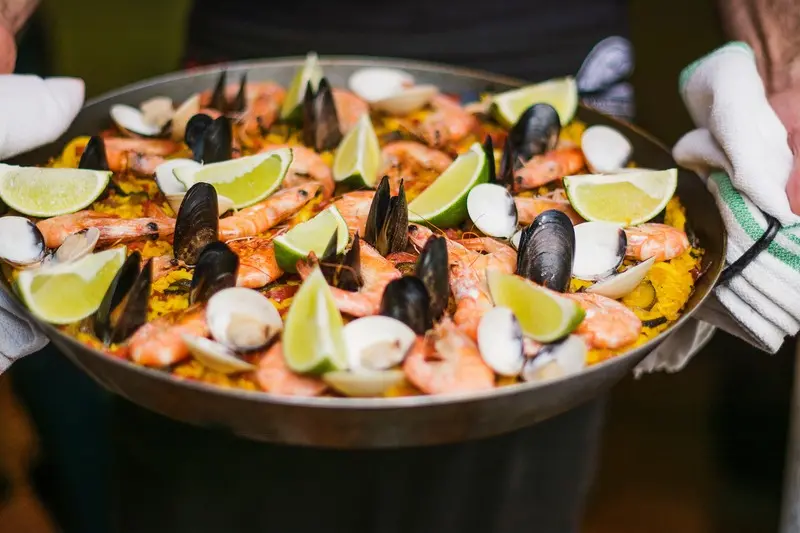
Spain is a food lover’s paradise, full of rich flavours. You can start with the world-famous paella in Valencia. Then, head to the Basque Country for little delights called pintxos. And for a cool break, try Andalusia’s gazpacho, a tasty cold soup.
Regional Specialties
In Spain, every region brings its own twist to the table. Valencia is known for paella, a delicious rice dish with seafood. Up in the Basque Country, you’ll find pintxos, which are snacks served on bread. Meanwhile, Andalusia cools you down with its famous gazpacho, perfect for hot weather.
Tapas Culture
Tapas are Spain’s fun way of eating. These small dishes are made for sharing. You can enjoy tasty bites like jamón ibérico, tortilla española, and patatas bravas with your friends. Trying different tapas in various places is a great adventure.
Wine Regions and Tasting
Spain is also famous for its wine. The Rioja region is known for its bold reds, and Priorat for its complex wines. You can’t leave out sherry from Jerez or cava from Catalonia. Joining a wine tour is a perfect way to taste some of Spain’s best.
It’s good to know that in Spain, meal times are a bit different. Lunch happens around 2 PM, and dinner starts late, after 9 PM. So, join the locals and take your time to enjoy the amazing food Spain has.
Cultural Etiquette and Customs in Spain
Knowing Spanish customs makes your trip better. Spain is very lively and has diverse traditions in each area. When you meet people, they might kiss you on both cheeks. This is a nice surprise!
In Spain, you don’t have to tip, but it’s kind to do so for good service. Giving a little extra is a great way to say thanks. Remember, some shops close in the afternoon for siesta. So, plan your shopping time to avoid missing out.
Flamenco is a fiery dance and music form tied to Spanish culture. It’s big in Andalusia. You should see a flamenco show while you’re there. Spain has many festivals too, which show off local traditions and joy.
Also, when you visit churches or temples, dress modestly. Be sure your shoulders and knees are covered. This shows respect. If you follow these tips, the locals will be extra friendly. They’ll help make your trip to Spain very memorable.
Language Tips for Travellers
Spain has a lot of diversity with its many languages and cultures. Even though the official language is Spanish, there are several others. While visiting, learning some local phrases can make your trip even better and help you make friends.
Essential Spanish Phrases
Learning basic Spanish will help you a lot. Start with easy terms like “Hola” (hello), Por favor (please), and “Gracias” (thank you). These words show respect and help you be polite.
You’ll find many chances to use Spanish, like ordering food or getting directions.
Regional Language Differences
In different places of Spain, you’ll hear other languages. For example, in Barcelona, there’s Catalan. The Basque Country has Basque, and Galician in the northwest. Knowing a bit the their language surprises the locals and shows you care about their culture.
In the cities, you can usually get by with English. In more rural places, knowing some Spanish is essential. Showing you’ve tried to learn local phrases can make people more friendly and open towards you.
Must-See Historical Sites and Landmarks
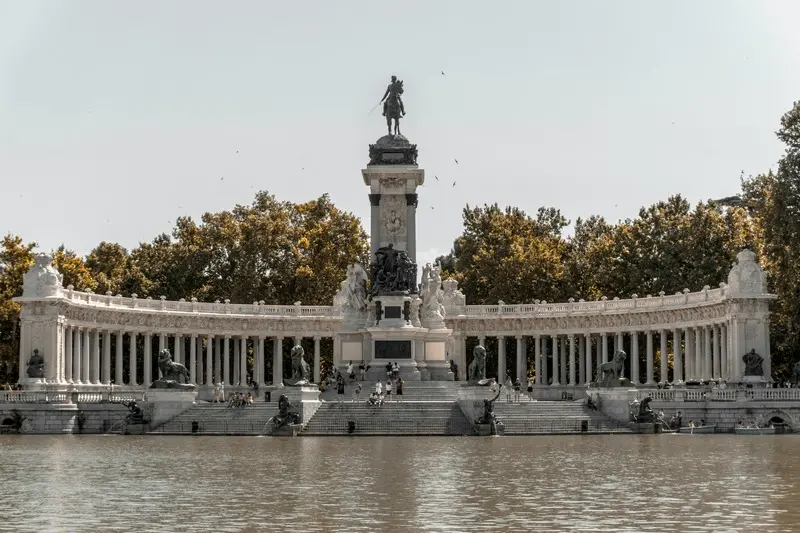
Spain has many historical gems to explore. The Alhambra in Granada is one such treasure. It shows off Moorish architecture beautifully. Plus, it has lovely gardens.
This palace-fortress isn’t just about architecture. It also gives stunning views of the Sierra Nevada. It’s an awesome mix of history with natural beauty.
In Barcelona, you must see the Sagrada Familia. This work by Antoni Gaudí mixes Gothic and Art Nouveau. Its spires and designs are truly amazing.
For fans of football, a visit to Santiago Bernabéu Stadium is a must. It’s the famous home of Real Madrid. You can see the trophy room and step on the field during a tour.
Often missed are places like the Roman aqueduct in Segovia or the Mezquita in Córdoba. These spots show different parts of Spain’s history. They cover Roman times, all the way to Islamic rule. Every site we visit adds to the beautiful tapestry of Spain’s story.
Outdoor Adventures and Natural Wonders
Spain has it all for nature lovers. There are mountains to climb and beaches to enjoy in the sun. Adventure is everywhere in this beautiful country.
Hiking Trails
The Sierra Nevada mountains are a hiker’s dream. They have trails that lead to amazing views. You can walk through meadows and see snow on the peaks.
The Camino de Santiago is also a great walk. It’s a journey through old villages and green countryside. This route has been a pilgrimage for many over the years.
Beaches and Coastal Areas
Spain’s coast is stunning. You can relax on the Costa del Sol or find quiet spots on the Costa Brava. The Canary and Balearic Islands offer clear waters for diving.
National Parks
Spanish national parks are full of amazing wildlife. Doñana National Park is great for birdwatching and seeing rare animals. Then there are the impressive canyons of Ordesa y Monte Perdido.
Teide National Park in Tenerife is truly unique. It has landscapes shaped by ancient volcanoes. A visit here is like going to another planet.
The Caminito del Rey in Málaga is where you can find excitement. It’s a walkway on cliffs that will make your heart race. Spain is full of places like these, promising unforgettable adventures.
Shopping and Souvenirs: What to Buy in Spain
Spain is like a treasure chest full of unique souvenirs. These items reflect its vibrant culture. When you visit Spain, look out for these special things to take back with you.
Spanish fans are not just for cooling off. They are beautiful and useful. You can also find Flamenco items like colourful shawls. These bring a bit of Andalusia’s charm to your home.
Don’t forget about Spain’s amazing food. Things like olive oil, saffron, and jamón ibérico are great. They make perfect gifts for your loved ones.
Check out the leather goods from Ubrique. They are known for their top quality. Something like a wallet or bag is a chic way to remember your trip. And in Toledo, you can find special swords and knives as exotic display pieces.
Barcelona has souvenirs inspired by Gaudí. Think notebooks with beautiful mosaics or fun figurines. For those who like wine, don’t miss buying some local bottles. They let you enjoy Spain’s tastes even when you’re back.
Every area in Spain has its own crafts. Valencia is known for its fine Lladró porcelain. And in Andalusia, you can find handmade guitars. These items are special because they reflect the unique culture of each region.
Budgeting for Your Spanish Adventure
Exploring Spain needs a well-thought-out budget. It’s important to plan ahead to enjoy your journey fully. We will look at how much everything costs in Spain.
Average Costs for Accommodation
Spain offers a wide range of accommodation. Hostels are the cheapest, at €15-30 per night, for those on a tight budget. For a more comfortable stay, look at mid-range hotels which go from €60-120 nightly. Top luxury hotels start at €200 per night.
Dining Expenses
Eating in Spain is a treat. Simple meals cost around €10-15, but fancy dinners can be €30-50 a person. Try tapas bars for good food on a budget. You can taste local dishes without spending a lot.
Transportation Costs
Travelling within Spain is simple but can be pricey. A high-speed train ticket costs from as little as €7 all the way up to €120 for long trips.
Conclusion
Planning a trip to Spain? Remember, this country is full of diverse experiences. You can explore busy cities or relax in the quiet countryside. Each trip to Spain combines history, culture, and stunning landscapes.
As you plan, think about what each region offers. Visit well-known sites and find secret places. Make sure to pick the best time, considering the season changes. The warm welcome and delicious food in Spain will make your trip even better.
By planning well, a dream trip to Spain is possible. Enjoy the relaxed life, taste the local dishes, and be part of the lively culture. Whether it’s the beaches, the ancient sites, or the festive events, Spain has a lot to offer. A visit here will make you want to come back again.


